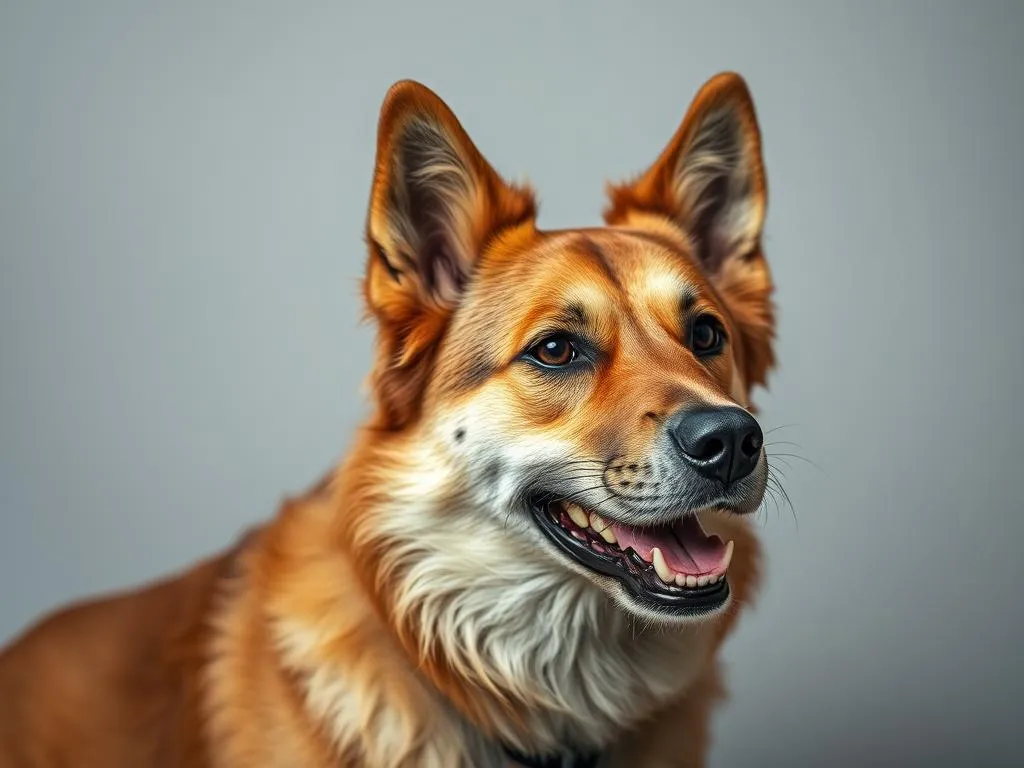
Introduction
Dog breeds are an essential aspect of our world, offering a diverse range of characteristics, temperaments, and appearances that cater to various human needs and lifestyles. Dog breeds are defined by their lineage, specific traits, and purposes, making them significant companions in our lives. The story of dog domestication dates back thousands of years, evolving from wild canines into the loyal friends we know today. Understanding different dog breeds is crucial for potential dog owners, as it helps in choosing the right companion that fits their family and lifestyle. Each breed comes with its own set of health and behavioral implications, making informed choices vital for a harmonious relationship.
Among the myriad of breeds, the Indian Pariah Dog stands out not only for its unique traits but also for its cultural significance in India. This breed, often overlooked, possesses qualities that make it an ideal companion for many families.
The Indian Pariah Dog: An Overview
Origin and History
The Indian Pariah Dog is one of the oldest and most iconic breeds in India, with a history that dates back thousands of years. These dogs are believed to have descended from the first domesticated dogs, making them an integral part of India’s canine heritage. Historically, they have served as companions, guardians, and working dogs, adapting to various environments across the subcontinent. The Pariah’s resilience and intelligence have enabled it to thrive in diverse climates and conditions, earning a place in both urban and rural settings.
Physical Characteristics
The Indian Pariah Dog typically exhibits a medium build, standing about 18 to 24 inches at the shoulder and weighing between 30 to 50 pounds. Their physique is well-suited for agility and endurance, making them adept at navigating various terrains.
- Coat Color and Texture: The coat of the Indian Pariah Dog can vary widely, including shades of brown, black, and white, often featuring a short, dense texture that is well-suited for India’s climate.
- Distinctive Features: They are easily recognizable by their large, erect ears, a long tapering tail, and a wedge-shaped head, which give them an alert and intelligent expression.
Temperament and Behavior
The Indian Pariah Dog is known for its friendly and social nature. They are generally good with children and other pets, making them excellent family dogs. Their intelligence plays a significant role in their trainability, though they can exhibit an independent streak.
- General Temperament Traits: Pariah dogs are typically loyal, protective, and alert, making them exceptional watchdogs. They form strong bonds with their families and are often described as affectionate companions.
- Intelligence and Trainability: While they are intelligent and can learn commands quickly, consistency in training is essential. Their independent nature may sometimes pose challenges during training sessions.
- Social Behavior: These dogs are known for their sociable demeanor, often enjoying the company of humans and other animals. Early socialization is crucial to ensure they develop into well-rounded adults.
Health and Care Needs
Common Health Issues
The Indian Pariah Dog is generally robust and healthy, with fewer genetic health issues compared to many purebred dogs. However, like all breeds, they can be prone to certain health problems, such as skin allergies or parasites. Their average lifespan ranges from 12 to 15 years, and regular veterinary check-ups can help in preventive care.
Dietary Needs
A balanced diet is crucial for the overall health of the Indian Pariah Dog. High-quality dog food that meets their nutritional requirements should be provided, with a focus on protein, healthy fats, and essential vitamins and minerals. Homemade diets can also be beneficial, but it is essential to consult with a veterinarian to ensure nutritional balance.
Grooming Requirements
Grooming the Indian Pariah Dog is relatively simple due to their short coat. Regular brushing is recommended to remove loose hairs and prevent matting.
- Bathing Frequency: They typically require bathing only when necessary, as excessive bathing can strip their coat of natural oils.
- Grooming Tips: Regular ear cleaning and nail trimming should be part of their grooming routine to maintain overall hygiene.
Exercise and Activity Levels
The Indian Pariah Dog is an active breed that requires daily exercise to remain healthy and mentally stimulated.
- Daily Exercise Needs: A minimum of 30 to 60 minutes of exercise each day is essential, which can include walks, playtime, or agility training.
- Recommended Activities: Activities such as fetch, hiking, and interactive games can provide both physical and mental stimulation, ensuring a happy and healthy dog.
The Indian Pariah Dog in Culture
Cultural Significance in India
The Indian Pariah Dog holds a special place in Indian culture, often referred to as the “desi dog.” Historically, they were common in Indian households, providing companionship and protection. Their adaptability and resilience made them ideal for rural communities, where they were often utilized for hunting and guarding livestock.
- Folklore and Representation: In Indian folklore, these dogs are often depicted as loyal companions, with various stories highlighting their bravery and intelligence. They have been portrayed in art and literature, symbolizing the deep-rooted connection between humans and dogs.
Modern Perception
In recent years, the perception of the Indian Pariah Dog has begun to shift. Many advocates are working towards breed recognition and conservation, emphasizing the importance of preserving this indigenous breed. Awareness campaigns highlight the benefits of adopting Pariah dogs, showcasing their adaptability and suitability for modern lifestyles.
Comparison with Other Dog Breeds
Similar Breeds
Several breeds share similar characteristics with the Indian Pariah Dog, including:
- Basenji: Known for their cat-like grooming habits and independence.
- Shikoku: A medium-sized breed from Japan, recognized for its loyalty and intelligence.
Differences in Traits
While the Indian Pariah Dog shares traits with these breeds, it often exhibits a more robust health profile and an unparalleled ability to adapt to various living conditions.
- Temperament: Compared to Basenjis, which can be more aloof, Indian Pariah Dogs are typically more sociable and affectionate.
- Health: The Pariah dog is generally less prone to inherited health issues than many purebred dogs.
Why Choose an Indian Pariah Dog?
Adopting an Indian Pariah Dog comes with several advantages:
- They are low-maintenance in terms of grooming and health.
- Their friendly, adaptable nature makes them suitable for a variety of living situations.
- Supporting local breeds contributes to biodiversity and conservation efforts.
Adoption and Rescue
Finding an Indian Pariah Dog
For those interested in adopting an Indian Pariah Dog, several options are available. Local shelters, rescue organizations, and breed-specific groups often have Pariah dogs looking for homes.
- Considerations Before Adopting: Prospective owners should evaluate their lifestyle and ensure they can meet the exercise and social needs of the breed.
The Adoption Process
The process of adopting an Indian Pariah Dog typically involves:
- Filling out an application to adopt.
- A home visit or interview to assess compatibility.
- A trial period, allowing both the dog and owner to adjust.
Supporting local shelters and breed advocacy groups can also make a significant impact on the lives of these dogs.
Training and Socialization
Basic Training Techniques
Training an Indian Pariah Dog can be a rewarding experience, especially when using effective methods.
- Consistency and Positive Reinforcement: Positive reinforcement techniques, such as treats and praise, work best with this breed. Consistent commands and routines help establish a clear understanding of expectations.
Socialization Tips
Proper socialization is vital for the Indian Pariah Dog to develop into a well-adjusted adult.
- Socialization with People and Other Animals: Early exposure to various people, environments, and other animals will help them become more adaptable and confident. Puppy classes and dog parks can provide excellent opportunities for socialization.
Frequently Asked Questions (FAQs)
Are Indian Pariah Dogs good for families?
Yes, Indian Pariah Dogs are known for their friendly and affectionate nature, making them great companions for families. They are typically good with children and can adapt well to family life.
How do they fare in different climates?
The Indian Pariah Dog is well-adapted to a variety of climates, particularly warmer environments. Their short coat and resilience make them suitable for both hot and moderate climates.
What are the best training methods for this breed?
The best training methods for Indian Pariah Dogs include positive reinforcement, consistency, and early socialization. Engaging in fun and interactive training sessions can help keep them motivated.
Conclusion
The Indian Pariah Dog is a remarkable breed, embodying resilience, intelligence, and a deep cultural significance in India. Their unique traits make them well-suited for various lifestyles, and their minimal health concerns and grooming requirements make them a practical choice for many families.
As awareness grows regarding the plight of native breeds, it’s essential to consider adopting an Indian Pariah Dog. Supporting local shelters and advocacy efforts can help ensure the survival of this beloved breed, allowing their legacy to continue for generations to come.









